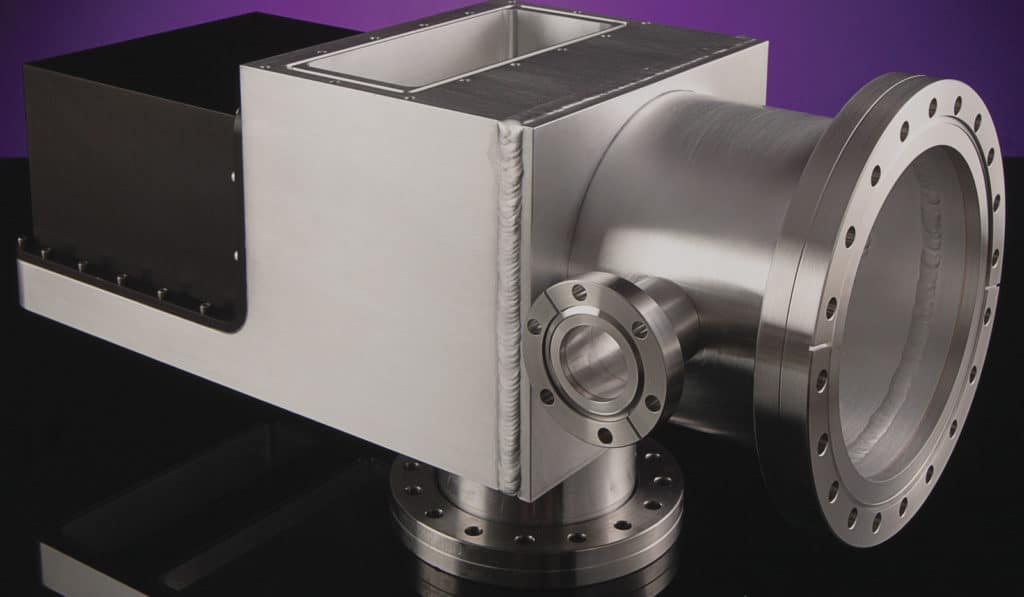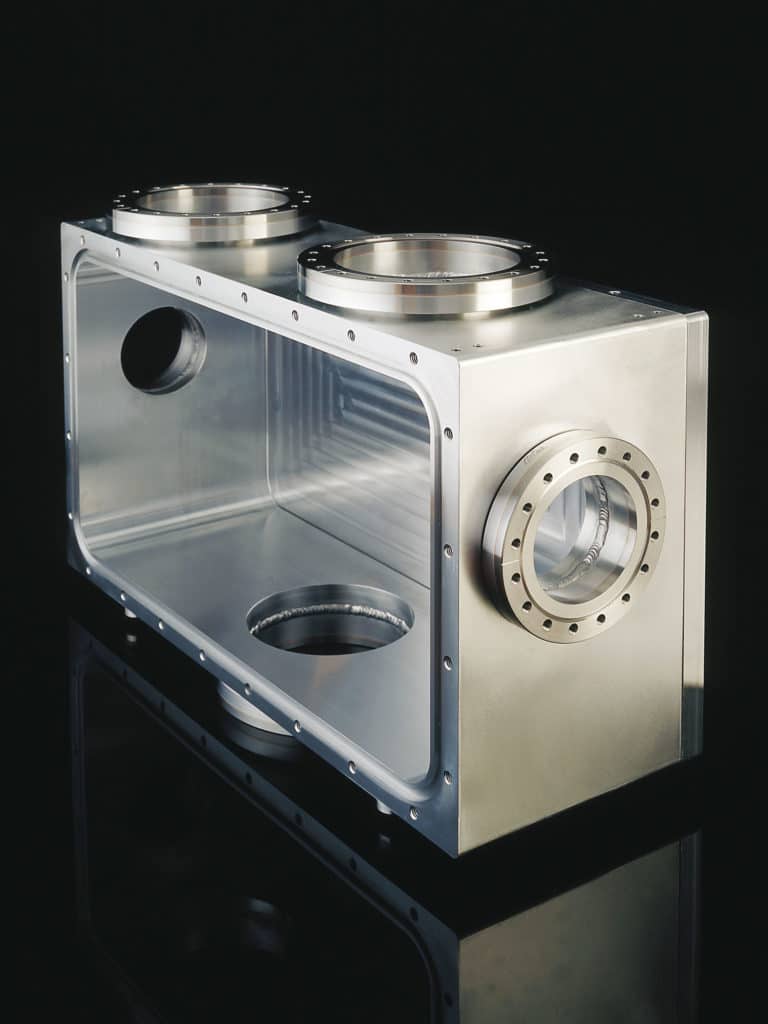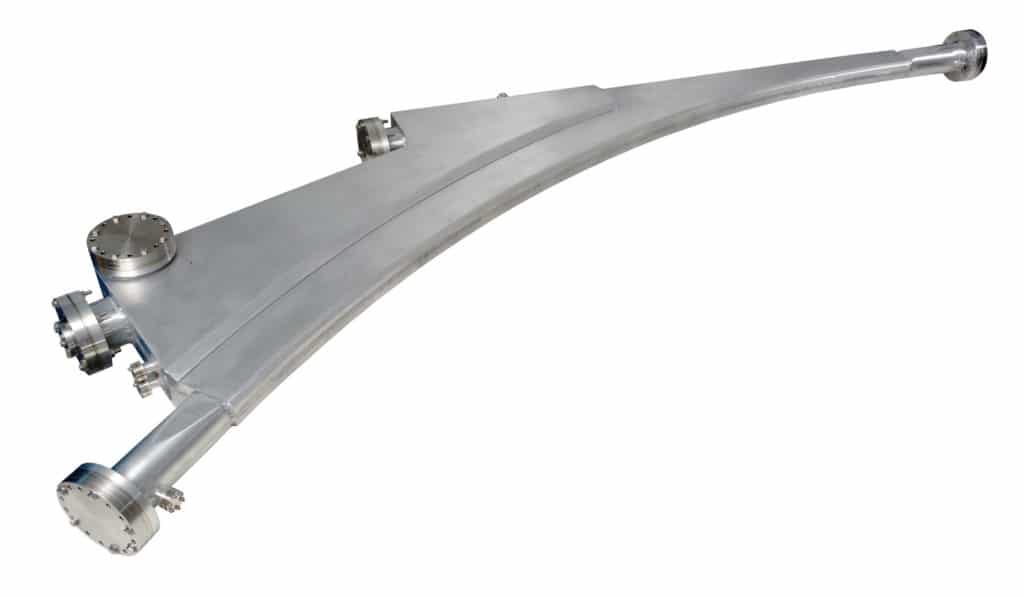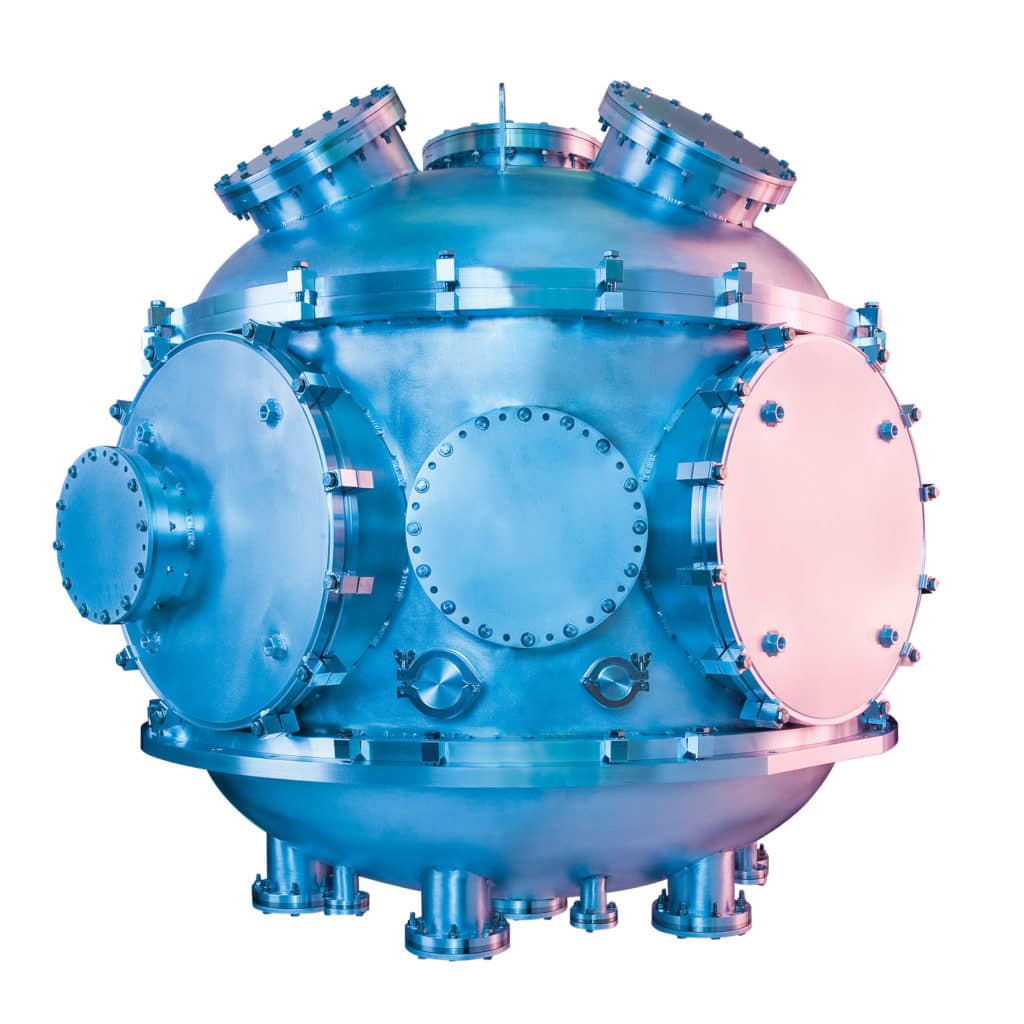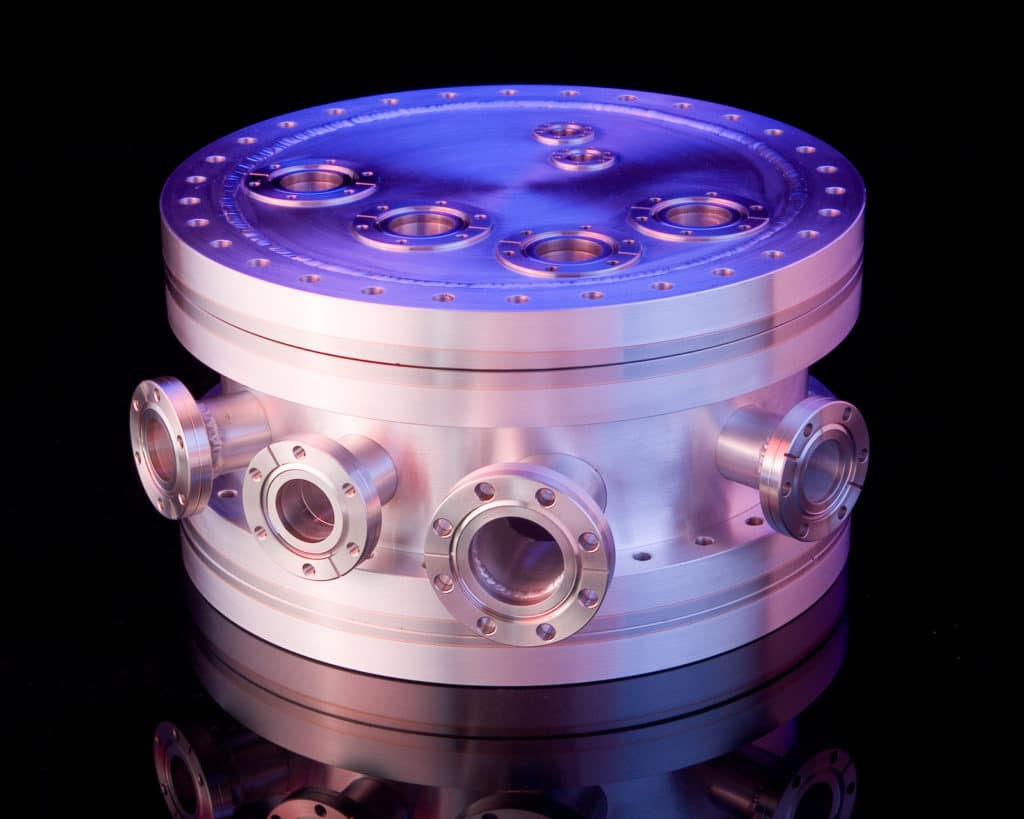The following physical properties of aluminum describe why it is an excellent vacuum material:
Outgassing Properties
One of the most important properties of a vacuum material is the outgassing rate as this determines the ultimate pressure that may be obtained in the vacuum chamber. Repeatable outgassing rates of of <1 x 10-13 Torr liter/sec cm2 are now possible in aluminum UHV systems, comparable to the best outgassing rates obtainable with stainless steel. This improvement in outgassing performance has been one of the principal breakthroughs that has allowed aluminum to become a competitive material for the construction of UHV systems.
Thermal Conductivity
Depending on the alloy, aluminum’s thermal conductivity ranges between 170 W/mK and 230 W/mK. Stainless steels, by contrast, have thermal conductivities that are between 14 W/mK and 16 W/mK, so aluminum’s thermal conductivity is roughly 10x that of stainless steel. High thermal conductivity is an advantage when designing systems that require temperature cycling. This is the case for vacuum systems that must be baked to reach UHV levels. An aluminum chamber may be baked and then cooled much more rapidly than a stainless steel chamber. Furthermore, aluminum`s high conductivity allows a complete bakeout without re-condensation of gases on local cool spots, a common problem in stainless steel systems.
Due to aluminum’s superior thermal conductivity, aluminum vacuum chambers:
- bake more uniformly even at lower temperatures (150 C).
- bake-out faster. Aluminum chambers need only bake at 150 C for 24 hours to obtain the same level of baking as stainless at 250C for 48 hours
Mechanical Properties
Typical elastic modulii for aluminum alloy 6061 T6 and stainless steel alloy 304 are 7470 kgf/mm2 and 19700 kgf/mm2, respectively. If these values are used in mechanical formulas for standard geometries, the ratios of critical thickness for the two materials are:
Here the equation for total deflection of a flat plate
tp = (kPrp4/(Ed))1/3
Since the Modulus of Al is 1/3 of SS:
tAS = (ESS/EAl)1/3 = (19,000/7,474)1/3 = 1.36 x SS
Aluminum Chambers need only be ~1.4x thicker than stainless to maintain the same or less deflection
tp = Thickness of plate
k = .0696 if Clamped, or = 0.171 of clamped
P = Atmospheric Pressure
rp = Radius of circular plate or small side of rectangular plate
E = Modulus of Elasticity: Al = 7,474 Kgf/mm2 & SS = 19,000 Kgf/mm2
d = Acceptable deflection
tAS = Acceptable deflection
Note that the ratios are closer to unity than you would expect at first glance. An aluminum vacuum chamber, therefore, will not require parts that have appreciably greater thickness than similar ones manufactured from stainless steel. A certain minimum thickness is required to resist deformation from atmospheric pressures.
Weight
Aluminum is roughly 1/3 the weight of stainless steel (2.8 g/cm3 [Al] vs. 8.0 g/cm3 [stainless steel alloys]). The cost burden associated with excess weight begins when the raw materials are handled and progresses throughout the manufacturing process. It affects all production steps, including shipping, installation, and even the architectural engineering and construction of the environment surrounding the chamber.
Magnetic Properties
Aluminum is not magnetic, whereas stainless steel, being essentially an alloy of iron, exhibits residual magnetism. The absence of magnetic properties in aluminum is advantageous for applications involving charged particle beams because the vacuum chamber will not modify the fields created from the beam control magnets.
Radioactivity
Aluminum has a much more rapid decay of induced radioactivity than stainless steel. If both materials are bombarded with the same flux of charged particles, the residual radioactivity will typically be one to two orders of magnitude less for an aluminum sample than for an identically shaped stainless steel sample. The nuclear half-life of elements that make up stainless steel suggests that alpha-particle contamination is always present in stainless steel and a possible source of circuit damage.
Corrosion
The corrosion of both aluminum and stainless steel alloys in reactive gasses is complicated. Experimental work performed on various alloys in different reactive gaseous environments shows that both aluminum and stainless steel are subject to attack by reactive gasses. Halogen containing species are typically the most damaging, and the corrosion of any given compound is usually no worse than that of its halogen component alone.
Aluminum is no worse with regard to corrosion than stainless steel. It simply has different reaction dynamics that do not serve as a source of iron and nickel contamination, one of the most significant yield-limiting factors for silicon IC production.
